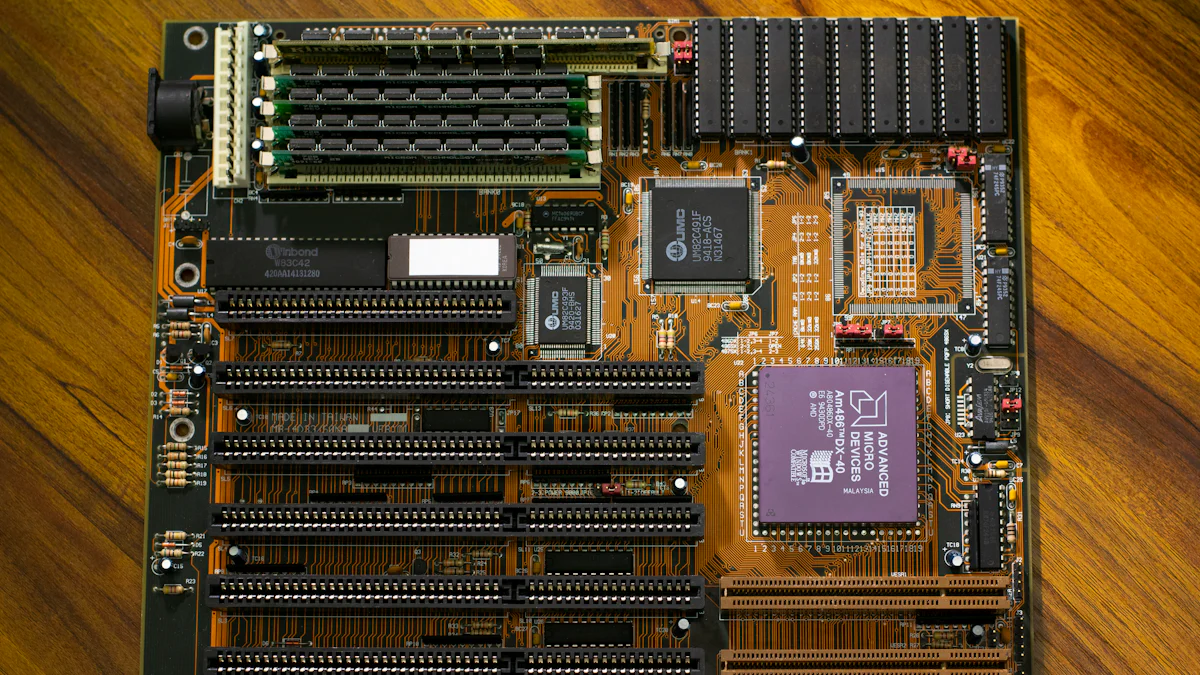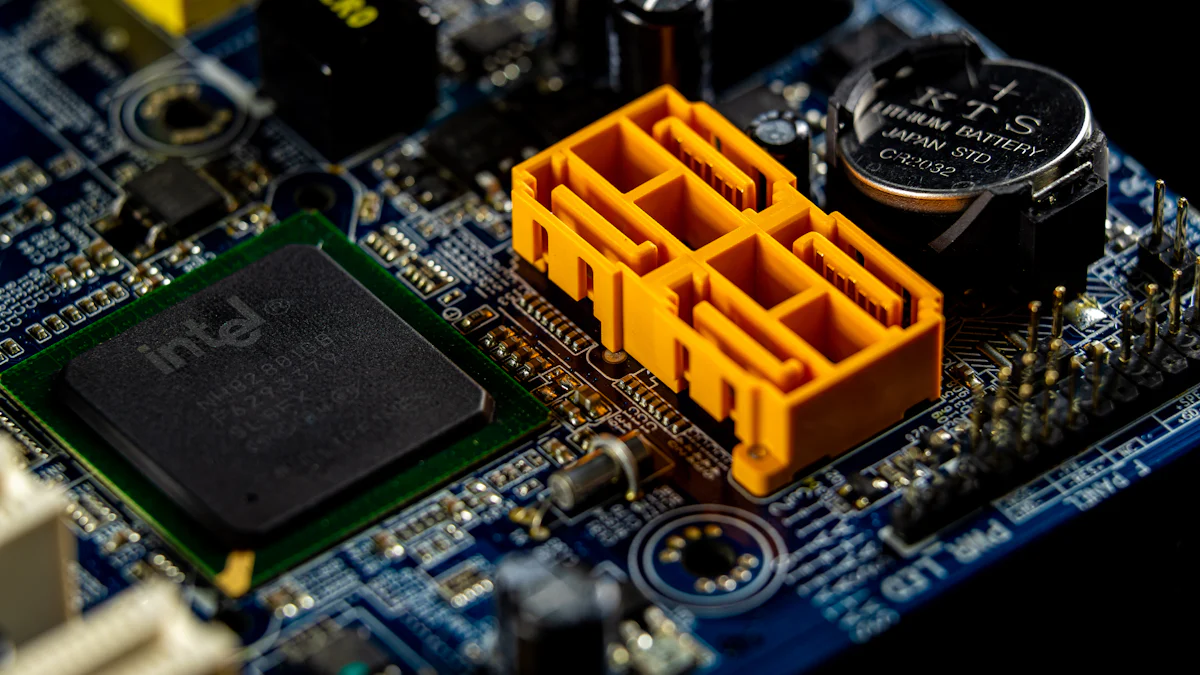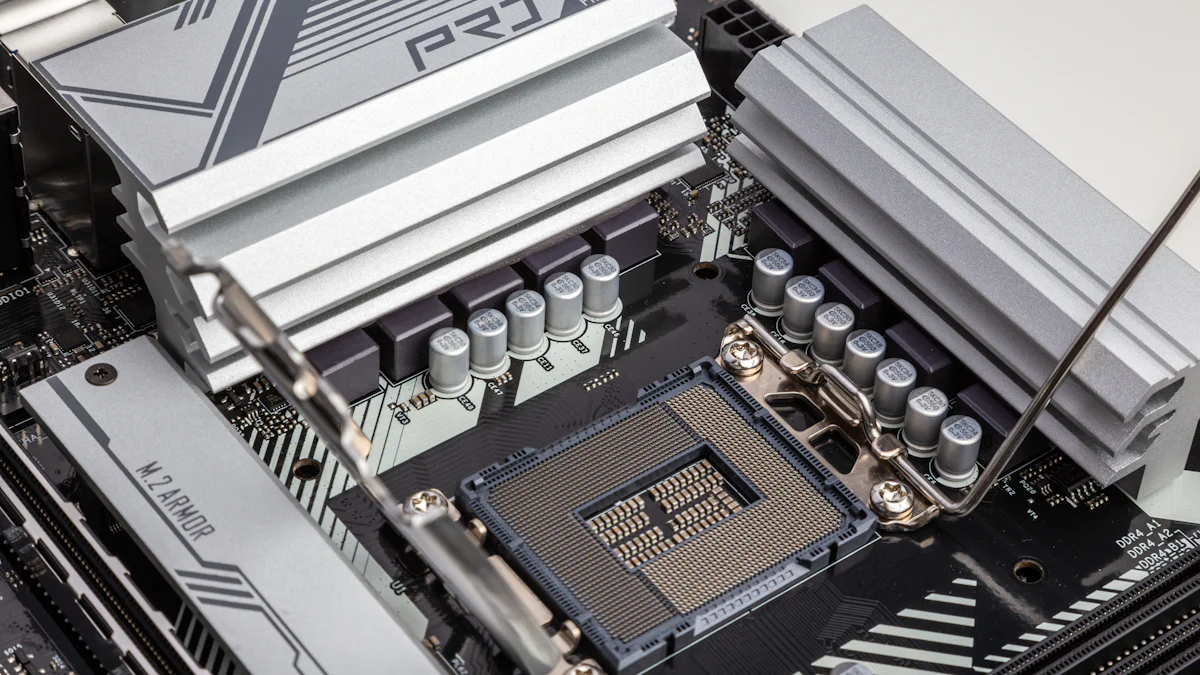
Epi susceptor technology plays a critical role in epitaxial deposition processes, serving as the foundation for precise and uniform layer growth. This technology directly influences the efficiency of semiconductor manufacturing by ensuring high-quality production and reducing material waste. Its innovative designs and materials have driven advancements in device performance, meeting the growing demands of modern electronics. As the semiconductor industry evolves, epi susceptor technology continues to shape the future of manufacturing, enabling breakthroughs in energy efficiency, material compatibility, and production scalability.
Key Takeaways
- Epi susceptor technology is essential for achieving uniform layer growth in semiconductor manufacturing, directly impacting device performance and production efficiency.
- High-purity silicon carbide (SiC) is a critical material for modern susceptors, offering excellent thermal properties and durability for demanding applications.
- Innovative designs and advanced coatings enhance the durability of susceptors, reducing contamination risks and improving overall production yields.
- Energy efficiency is a growing focus, with new susceptor designs and energy recovery systems helping to lower operational costs and environmental impact.
- The adaptation of epi susceptors for emerging materials like SiC and GaN is crucial for meeting the unique thermal and electrical requirements of advanced semiconductor devices.
- Integrating IoT and AI technologies into manufacturing processes allows for real-time monitoring and predictive maintenance, enhancing efficiency and reducing downtime.
- Collaboration between industry and academia is vital for driving innovation in epi susceptor technology, addressing challenges, and advancing semiconductor manufacturing.
Understanding Epi Susceptor Technology

What is Epi Susceptor Technology?
Definition and purpose in epitaxial deposition.
Epi susceptor technology serves as a cornerstone in epitaxial deposition processes. It provides a stable platform for wafers during the growth of thin crystalline layers. This process ensures precise control over the deposition environment, which is critical for achieving uniformity and quality in semiconductor devices. By maintaining consistent thermal and chemical conditions, epi susceptors enable the production of high-performance electronic components.
Key materials and design considerations in susceptor technology.
The materials used in epi susceptor technology significantly impact its performance. High-purity silicon carbide (SiC) is a popular choice due to its excellent thermal conductivity and resistance to high temperatures. Advanced coatings, such as graphite or specialized ceramics, enhance durability and minimize contamination risks. Design considerations focus on optimizing heat distribution and ensuring compatibility with various wafer sizes. Engineers also prioritize reducing thermal stress to maintain the structural integrity of the susceptor during repeated use.
Role in Semiconductor Manufacturing
Ensuring uniform epitaxial layer growth.
Epi susceptor technology plays a vital role in achieving uniform epitaxial layer growth. The susceptor’s ability to distribute heat evenly across the wafer surface ensures consistent deposition rates. This uniformity is essential for producing defect-free layers, which directly influence the performance of semiconductor devices. Precise rotation mechanisms in susceptors further enhance layer uniformity by eliminating variations in material deposition.
Enhancing device performance and production yield.
The use of advanced epi susceptor designs contributes to improved device performance. By minimizing contamination and ensuring precise layer growth, susceptors help manufacturers achieve higher-quality outputs. This technology also boosts production yield by reducing defects and material waste. As a result, semiconductor manufacturers can meet the growing demand for reliable and efficient electronic components.
Key Trends in Epi Susceptor Technology

Advancements in Material Science
Development of high-purity silicon carbide (SiC) susceptors for demanding applications.
High-purity silicon carbide (SiC) susceptors have become a cornerstone in modern semiconductor manufacturing. Their exceptional thermal conductivity and resistance to high temperatures make them ideal for demanding epitaxial deposition processes. These susceptors ensure consistent performance even under extreme conditions, which is critical for producing high-quality semiconductor devices. Manufacturers continue to refine SiC materials to meet the increasing demands of advanced applications, including power electronics and high-frequency devices.
Use of advanced coatings to improve durability and reduce contamination.
Advanced coatings play a pivotal role in enhancing the durability of epi susceptor surfaces. Coatings such as graphite or ceramic layers protect susceptors from wear and tear caused by repeated high-temperature cycles. These coatings also minimize contamination risks, ensuring a cleaner deposition environment. By reducing particle generation and chemical reactions, advanced coatings contribute to higher production yields and improved device reliability.
Focus on Energy Efficiency
Innovations in susceptor design to optimize energy consumption.
Energy efficiency has become a priority in epi susceptor technology. Engineers are developing innovative susceptor designs that optimize heat distribution and reduce energy loss. These designs focus on maintaining uniform thermal conditions while minimizing the energy required for heating. Such advancements not only lower operational costs but also align with the industry’s push toward sustainable manufacturing practices.
Integration of energy recovery systems in epitaxial processes.
Energy recovery systems are transforming the way epitaxial processes utilize energy. These systems capture and reuse excess heat generated during deposition, significantly improving overall energy efficiency. By integrating these systems into epi susceptor setups, manufacturers can reduce energy consumption and environmental impact. This approach supports the industry’s goal of achieving greener and more cost-effective production methods.
Compatibility with Emerging Materials
Adaptation for silicon carbide (SiC) and gallium nitride (GaN) applications.
The rise of silicon carbide (SiC) and gallium nitride (GaN) materials has driven the need for adaptable epi susceptor technology. These materials, known for their superior electrical and thermal properties, require specialized susceptors to handle their unique characteristics. Engineers are designing susceptors that accommodate the specific requirements of SiC and GaN, ensuring precise layer growth and optimal device performance.
Addressing challenges in handling new materials with unique thermal properties.
Emerging materials often present challenges due to their distinct thermal behaviors. Epi susceptor technology must address issues such as uneven heat distribution and thermal stress. Advanced designs and materials are being developed to overcome these challenges, ensuring reliable performance during deposition. By addressing these complexities, manufacturers can expand the use of new materials in cutting-edge semiconductor applications.
Adoption of Smart Manufacturing Practices
Integration of IoT and sensors for real-time monitoring and control.
The integration of IoT and sensors has revolutionized manufacturing processes. In epi susceptor technology, these tools enable real-time monitoring of critical parameters such as temperature, pressure, and deposition rates. Sensors collect data continuously, providing manufacturers with precise insights into the operational environment. IoT systems transmit this data to centralized platforms, allowing engineers to make informed adjustments instantly. This approach ensures consistent quality and minimizes the risk of errors during epitaxial deposition. By leveraging IoT and sensor technologies, manufacturers achieve greater control over production processes, enhancing efficiency and reliability.
Use of AI-driven analytics for predictive maintenance and process optimization.
AI-driven analytics has become a cornerstone of modern manufacturing. In the context of epi susceptor technology, AI tools analyze vast amounts of operational data to predict potential equipment failures. Predictive maintenance strategies reduce downtime by addressing issues before they escalate. AI also optimizes deposition processes by identifying patterns and recommending adjustments to improve performance. These analytics enhance production yield and reduce material waste. Manufacturers benefit from streamlined operations and improved cost-effectiveness, making AI an essential component of smart manufacturing practices.
Adaptation to Larger Wafer Sizes
Innovations in susceptor design to maintain quality in larger wafers.
The shift toward larger wafer sizes has created new challenges for susceptor design. Engineers have developed innovative solutions to ensure consistent quality during epitaxial growth. Advanced susceptor designs distribute heat evenly across the expanded wafer surface, preventing defects caused by uneven thermal conditions. These designs also incorporate materials that withstand the increased stress associated with larger wafers. By addressing these technical demands, manufacturers maintain high standards of quality while scaling up production capabilities.
Addressing scalability challenges in epitaxial growth processes.
Scaling epitaxial growth processes for larger wafers requires overcoming significant challenges. Larger wafers demand precise control over deposition rates and uniformity. Epi susceptor technology plays a critical role in meeting these requirements. Engineers refine susceptor configurations to handle the complexities of scaling without compromising performance. These advancements ensure that manufacturers can produce high-quality semiconductor devices at larger scales. By addressing scalability challenges, the industry continues to meet the growing demand for advanced electronics.
Challenges and Opportunities
Challenges in Epi Susceptor Technology
Balancing cost with performance improvements in advanced designs.
Manufacturers face a persistent challenge in balancing cost and performance when developing advanced epi susceptor designs. High-performance materials, such as silicon carbide (SiC), offer superior thermal and mechanical properties but come with significant production costs. Engineers must carefully evaluate trade-offs between material quality and affordability to ensure that the technology remains accessible for widespread use. Achieving this balance requires innovative approaches to material sourcing, manufacturing processes, and design optimization.
Mitigating contamination and wear in high-temperature environments.
Epi susceptor technology operates under extreme conditions, including high temperatures and reactive chemical environments. These conditions increase the risk of contamination and wear, which can compromise the quality of epitaxial layers. Contaminants, such as particles or chemical residues, may lead to defects in semiconductor devices. Wear and degradation of susceptor surfaces reduce their lifespan and reliability. Addressing these issues demands the development of robust materials and protective coatings that can withstand prolonged exposure to harsh conditions while maintaining performance.
Opportunities for Innovation
Potential breakthroughs in material science and susceptor engineering.
Material science advancements present significant opportunities for improving epi susceptor technology. Researchers are exploring novel materials with enhanced thermal conductivity, durability, and resistance to chemical reactions. For instance, further refinement of silicon carbide (SiC) and the introduction of new composite materials could revolutionize susceptor performance. Additionally, breakthroughs in susceptor engineering, such as innovative geometries and surface treatments, could enhance heat distribution and reduce energy consumption. These innovations have the potential to elevate the efficiency and reliability of semiconductor manufacturing processes.
Collaboration between industry and academia to drive technological progress.
Collaboration between industry leaders and academic institutions offers a pathway to accelerate innovation in epi susceptor technology. Academic researchers bring expertise in fundamental science and experimental techniques, while industry professionals provide practical insights and resources for large-scale implementation. Joint research initiatives can address complex challenges, such as scaling up production for larger wafers or adapting to emerging materials like gallium nitride (GaN). By fostering partnerships, the semiconductor industry can leverage diverse perspectives and drive technological advancements that benefit both manufacturers and end-users.
Epi susceptor technology remains a cornerstone of semiconductor manufacturing, driving precision and efficiency in epitaxial deposition. Key trends, such as advancements in materials, energy-efficient designs, and smart manufacturing practices, continue to shape its evolution. Challenges like cost-performance balance and contamination risks present hurdles, yet they also open doors for innovation. The future of epi susceptor technology promises transformative impacts, enabling the industry to meet growing demands for high-performance devices. By embracing these advancements, manufacturers can unlock new possibilities in semiconductor production.